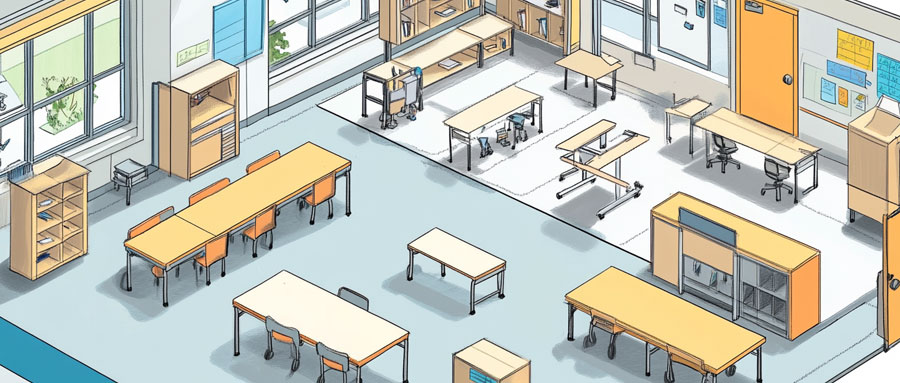
Introduction to STEM Education Needs
STEM—Science, Technology, Engineering, and Mathematics—education is pivotal in equipping students with the critical skills needed to succeed in today’s technology-driven world. These disciplines require not only intellectual rigor but also a classroom environment that fosters creativity, collaboration, and innovation. The right classroom setup, especially the furniture, plays a crucial role in making this possible. This blog explores how MityBilt’s furniture solutions are tailored to meet the unique demands of STEM learning environments.
Importance of Adaptive Furniture
STEM education often involves a blend of lectures, collaborative projects, and hands-on experiments. Each of these activities demands different configurations and flexibility from the learning environment. Adaptive furniture that can be easily reconfigured supports these shifts, enabling an educational space that morphs as needed. MityBilt’s modular desks and tables can be rearranged into lecture layouts, collaborative circles, or project groups without disrupting the flow of learning.
Integration of Technology with Furniture
Today’s STEM classrooms are tech-heavy, integrating tools from computers and tablets to advanced scientific calculators and interactive digital platforms. Classroom furniture must support this technological integration seamlessly. MityBilt’s tech-ready furniture comes equipped with built-in power outlets, USB ports, and data ports, ensuring that students can use their devices efficiently and without interruption. These features help create a fully integrated environment where technology and furniture work in unison to enhance the learning experience.
Enhancing Collaboration through Design
STEM education heavily relies on teamwork and collaborative problem-solving. Furniture that promotes a collaborative environment can significantly enhance the effectiveness of such educational approaches. MityBilt’s collaborative tables and mobile chairs are designed to be moved and grouped easily, encouraging interaction and teamwork among students. This flexibility not only supports spontaneous group discussions but also planned teamwork activities that are essential in STEM education.
Safety and Durability in STEM Settings
In STEM classrooms, where experiments and practical projects are routine, furniture must not only be versatile but also exceptionally durable and safe. MityBilt products are designed with safety and longevity in mind, featuring sturdy construction and materials that can withstand the rigors of a STEM environment. Surfaces are easy to clean and resist stains from chemicals and other materials used in experiments, ensuring the classroom remains a safe space for all kinds of scientific exploration.
Real-Life Applications and Case Studies
MityBilt’s commitment to enhancing STEM education is demonstrated in numerous educational institutions that have transformed their learning spaces with our furniture. For instance, a high school in Toronto revamped their science labs with MityBilt’s adaptive lab tables and tech-ready desks, facilitating an increase in student engagement and a noticeable improvement in academic performance in STEM subjects.
Conclusion
Choosing the right furniture is crucial for fostering an effective STEM learning environment. The flexibility, integration with technology, collaboration support, safety, and durability MityBilt furniture offers make it an invaluable investment for any educational institution that aims to excel in STEM education. As the demand for STEM skills continues to grow, equipping classrooms with furniture that can support these educational pursuits is not just beneficial but essential. Educators looking to enhance their STEM facilities can turn to MityBilt for solutions that are not only functional but also conducive to the dynamic world of STEM education.
Contact us directly to learn more about our innovative furniture solutions designed specifically for modern educational challenges. Together, let’s create learning spaces that inspire, innovate, and educate the next generation of scientists, technologists, engineers, and mathematicians.